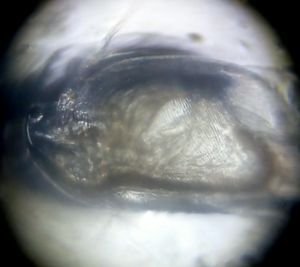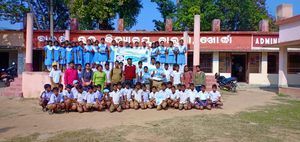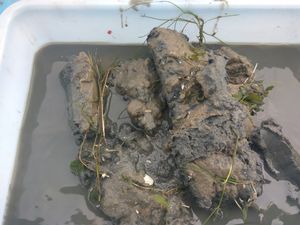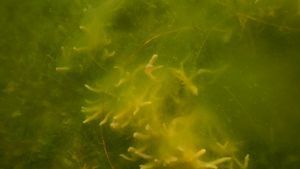Rhodophyta under Foldscope with Twinning North-East Partner
 Jan 21, 2019 • 5:09 AM UTC
Jan 21, 2019 • 5:09 AM UTC Unknown Location
Unknown Location 140x Magnification
140x Magnification Microorganisms
Microorganisms
Gurdeep Rastogi
Learn about the author...
51posts
8comments
1locations

Rhodophyta or Red Algae are one of the oldest group of eukaryotic algae. The Rhodophyta also comprises one of the largest phyla of algae, containing over 7,000. Polysiphonia and Ceramium are two rhodophyta well distributed around world. They are also found in Chilika abundantly growing near the edges of Islands, rocky surface in contact with water and also exposed and maey artificial surfaces left abundant in Chilika. Students of DN Government College, Itanagar while visiting Kalijai Island on their field visit noticed the growing red algae around the floating jetty. They collected the sample and mounted on a slide to observe them under Foldscope.
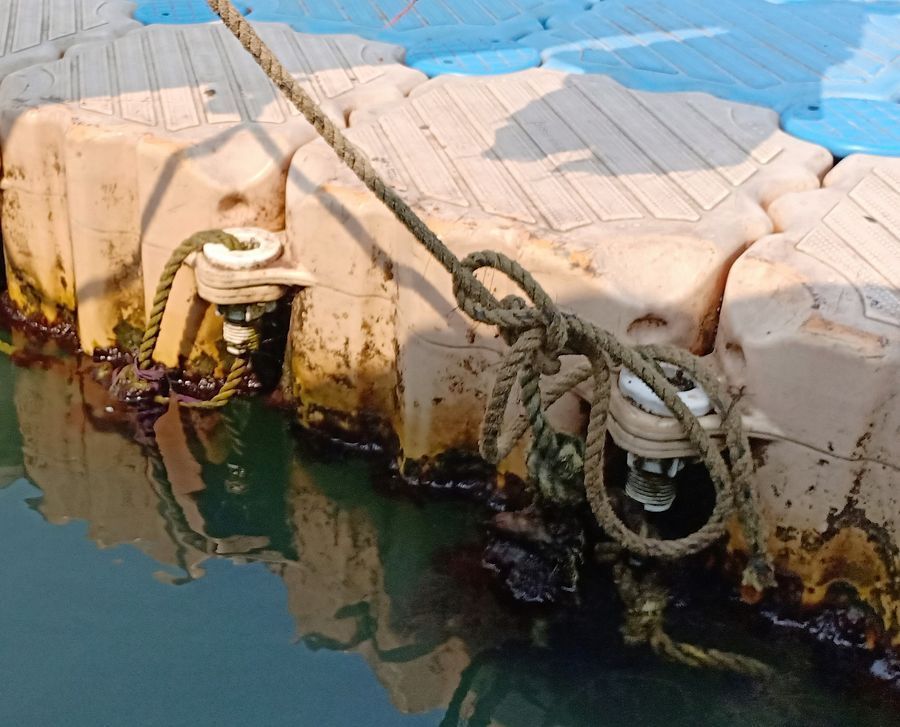
The Rhodophyta growing around the floating jetty of Kalijai Island.

Algae collected to be mounted under Foldscope.

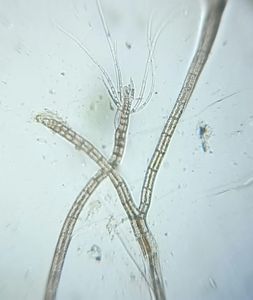
Polysiphonia sp. under foldscope.

Ceramium sp. under foldscope. Polysiphonia is a red alga that are usually well branched and are attached by rhizoids or
haptera to a rocky surface or other algae. The thallus (tissue) consists of
fine branched filaments each with a central axial filament supporting
pericentral cells. At the jetty not only Polysiphonia was found to be entwined with the other genera red algae Ceramium sp. Ceramium sp.
are small algae growing to no more than 30 cm (12 in) in length. They consist
of a terete monosiphonous axis of cells surrounded by smaller cells forming a
cortex. In most species this a continuous cortex enclosing the axis, in others
the cortical cells are arranged only in nodes at the junction of cells of the
axes. The tips of the branches grow in a pincer-like manner. Species in the
genus show irregular branching and are attached by unicellular or branched
rhizoids.
Other than the red algae, there was presence of green algae. When analysed under foldscope, they were identified to be spirogyra, one of the abundant green algae found in Chilika. It is well distributed in all the sectors of Chilika.
haptera to a rocky surface or other algae. The thallus (tissue) consists of
fine branched filaments each with a central axial filament supporting
pericentral cells. At the jetty not only Polysiphonia was found to be entwined with the other genera red algae Ceramium sp. Ceramium sp.
are small algae growing to no more than 30 cm (12 in) in length. They consist
of a terete monosiphonous axis of cells surrounded by smaller cells forming a
cortex. In most species this a continuous cortex enclosing the axis, in others
the cortical cells are arranged only in nodes at the junction of cells of the
axes. The tips of the branches grow in a pincer-like manner. Species in the
genus show irregular branching and are attached by unicellular or branched
rhizoids.
Other than the red algae, there was presence of green algae. When analysed under foldscope, they were identified to be spirogyra, one of the abundant green algae found in Chilika. It is well distributed in all the sectors of Chilika.
Sign in to commentNobody has commented yet... Share your thoughts with the author and start the discussion!

 0 Applause
0 Applause 0 Comments
0 Comments

